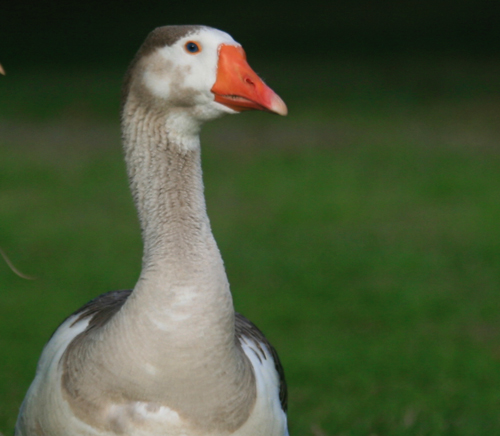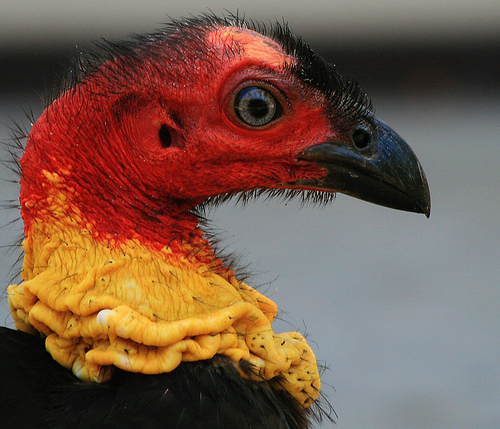The rules for wildlife and animal photography is not that different to photographing people. The mistake many amateur photographers make is to aim their cameras focal point directly at the animals body.
Professional wildlife photographers however, set their focus on the animals eyes. If the animals eyes are not in focus then the whole image will lose its impact.
Take the image below for example. It’s obvious that the animals eye is not the main focal point, therefore creating a very average feel to the overall photograph.
Now compare the first example with the image below of a wild bush turkey.
Wildlife
Digital SLR Camera: Canon EOS 400D / Rebel XTi
DSLR Lens: Canon EF 70-300mm f/4-5.6 IS USM
Exposure: 0.013 sec (1/80)
Aperture: f/6.3
Focal Length: 300 mm
ISO Speed: 200
Exposure Program: manual
What makes this wildlife shot work
What gives this photograph more impact than the first example, is that the turkey’s eye is the main focal point, making the eye very sharp. If I had aimed at the animals body, they eye would have had that unsharp glossy look to it, similar to the first example.
When photographing wildlife, more often than not, the animal will be on the move. It won’t matter if the body is partly blurred, as long as the eyes are sharp as a tack.
In fact if there is a little blurring in the body this will show movement and in many cases enhance the viewer experience.
So next time you’re out practicing wildlife and animal photography, instead of pointing the camera’s focal point at the body, aim it at the eyes instead. You’re sure to notice a huge difference in the results.
Online Photography Course
Sign-up for our online photography course and learn how to take better photos in easy to understand “at your own pace” lessons.
Click here for more information and sign-up details!

